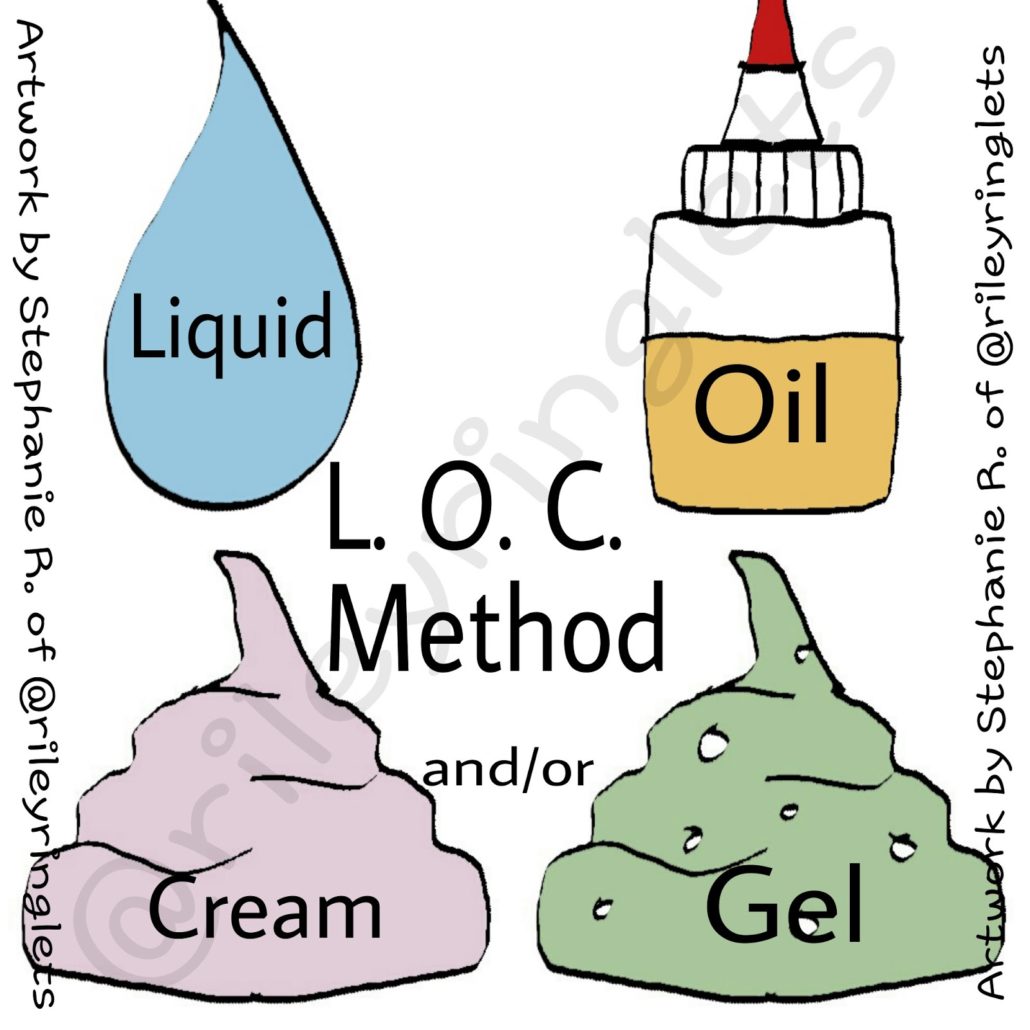The LOC Method: Everything You Need to Know
For some of us kinky-curly beauties, maintaining moisturized hair can feel like a relationship that just isn’t working – we end up frustrated and our tresses thirsty for a lot more TLC. Which is why many black women, with all hair types, have been singing the praises of a hair moisturizing regime called the LOC method as a way to manage their hair’s excessive dryness.
We’ve got lots to share on the LOC method, but before we do, it’s important to understand why hair can be excessively dry.
Causes of Dryness in Black Hair
Black hair tends to be naturally dry, but excessive dryness may be due to high or low porosity.
Porosity refers to your hair’s ability to absorb and retain moisture, oils and chemicals, and knowing whether your hair has high or low porosity is important if you want to maintain healthy hair.
When hair has high porosity, moisture moves in and out of the hair shaft quickly, leaving your hair frizzy, dry and coarse.
(Photo Source: http://www.naturalhairrules.com/moisturize-low-porosity-hair/)
On the flip side, when hair has low porosity, the layers of cuticles around the hair shaft are compact and flat, preventing moisture from reaching the insides of the hair strands.
So as you can see if your hair has either high or low porosity, retaining moisture may be difficult.
What is the LOC Method?
Even if you consider your hair to have normal porosity, i.e., your strands allow for easy moisture inside the cuticle, it can still be difficult to keep it moisturized. The LOC method helps add and keep moisture locked into hair for days after applying products.
LOC is an abbreviation for the trio of moisturizing basics: Liquid, Oil and Cream.
The LOC method is easy to remember (think LOC for locking in moisture) and even easier to apply as the name itself suggests the order in which to apply your products. Now, some people have found better success by reversing the order, making it the LCO method. So, deciding on the order of application will ultimately be up to you and what works best for your hair.
(Photo Source: http://www.rileyringlets.com/2016/01/the-loc-method.html)
How does the LOC Method Work?
The LOC method is considered by many to be successful because it contains the three essentials necessary for healthy, moisturized hair.
Liquid
The first step to moisturizing your hair is adding water or a water-based leave in conditioner. Here are some moisturizers that you can use to help you get started: Camille Rose Naturals Curl Moisture Milk , Miss Jessie’s Leave-in Condish and As I am CocoShea Spray.
Oil
After adding water to your hair it’s time to begin ‘LOC-ing’ everything in with oil. While it is true that oil and water do not mix, there are some oils that penetrate the hair shaft providing a protective layer around water molecules. Some of these oils include castor , jojoba and avocado oil. You may find that adding a heavy cream (LCO method) before adding oil works better for your hair.
Cream
After applying moisture and a penetrating oil it’s time to seal everything in. But don’t take the use of the word ‘Cream’, literally. This final step calls for a natural product that coats the hair while allowing some moisture from the atmosphere in. This can include a heavy butter-based product such as Jane Carter’s Nourish and Shine.
This product contains a blend of shea, illipe, mango, and kokum butters that will give your hair a soft, supple feel. Koils by Nature Nourishing Hair and Body Butter is another great product with penetrating, nutrient-rich butters that work well as a sealant.
If you have a finer hair texture that is easily weighed down by heavy creams, you could use rich, penetrating oils like the ones listed above instead, although it is still a good idea to find a lighter cream-based product to seal hair and maximize long-lasting moisture.
Although I’m a big LOC fan, it’s also fair to say that the LOC method is just one way you can moisturize your hair. As we all know, our hair changes over time and, this is after all a hair journey. Finding what works best for your hair today, tomorrow and into the future is a big part of the experience.
Enjoy these videos of the LOC method for keeping your dry hair moisturized during the winter!
and
Black Hair Spot has answers for every leg of your hair journey including protective styles
Do You Use the LOC/LCO method? If so What Products Do you Recommend?
